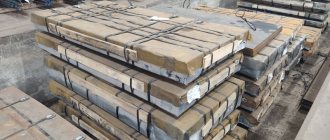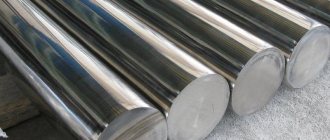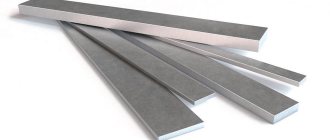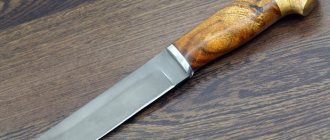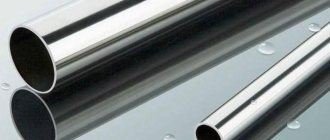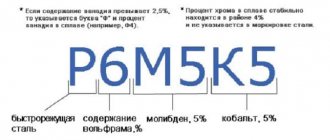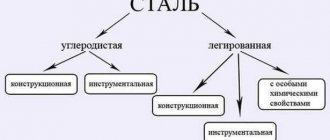In 1882, the English metallurgist Robert Hadfield produced a new grade of steel with a high manganese content (11-14.5% Mn, Fe - 82%, Si - 1%, C - 1%). Its main properties were high wear resistance at high pressures or shock loads, as well as high ductility. Soon this simple but innovative development found wide application in industry. Moreover, this grade of steel turned out to be so successful that it is still used to make track tracks for tanks, tractors, cars, armor plates, jaws of crushers, rail crosses, turnouts that operate under conditions of shock loads and abrasion, and even window bars in prisons.
Well, first things first... Soon after the release of Hadfield steel into mass production, the military became interested in it. And by the beginning of the First World War, infantry helmets made from this miracle steel were adopted into service by the British and later the American armies. Moreover, they were produced practically without changing technology until the 80s, later replacing the material with a lighter and equally durable organoplastic.
Hadfield steel and tank building helped. The use of Hadfield steel for the manufacture of tank track tracks was first mastered by the British in the late 1920s. This steel made it possible to significantly increase the service life of tank tracks from 500 km (a record during the First World War) to 4800 km. By the way, in the USSR, Hadfield steel smelting was mastered by 1936. Steel castings are rarely subjected to additional processing, since it is poorly processed by cutting due to hardening of the surface during the cutting process. Therefore, the use of Hadfield steel to make bars in prisons was, perhaps, the most mocking technique against prisoners. Even if you have a metal saw, it is impossible to saw through such a lattice, since during the cutting process there is a strong hardening of the processed surface, and as a result, hardening, an increase in hardness to the hardness of the saw cutting it and higher. This factor makes it impossible to saw through a grating made of Hadfield steel.
The metallurgical industry is one of the most important components of each country's GDP; it also produces unique and useful materials. Humanity could not survive without the products produced by metallurgical plants. Steel is one of them. There are different types of this material that are used in many industries. Steel, which has high ductility and wear rate, also known as Hadfield steel, is a unique alloy. The requirements for it are regulated by GOST 977-88 and foreign analogues (USA, England, Germany, China, Japan, Finland, Spain, Korea).
History of Hadfield steel
Based on the name, it can be argued that it was Robert Hadfield who obtained this alloy. Who was this developer? Robert Hadfield was an English metallurgist who developed an alloy with increased strength in 1882. Quite quickly, this steel became widespread and turned out to be a very unique material.
After Hadfield developed a unique steel, the military became interested in his development. This is not surprising, since such an alloy is an integral component for creating protective equipment for the military.
Heavy-Duty Infantry Helmets are the first protective equipment based on Hadfield steel. Similar helmets were used by soldiers of the British army, then the US military became interested in the development and began their production. Until the 80s, Hadfield steel technology did not change. But since the 80s, organoplastic was developed, which was not inferior in strength to the material developed by the British metallurgist, but was much lighter.
Infantry helmets are not the only use for Hadfield steel. The British were the first to use this high-quality steel for other purposes. Crawler tank tracks began to be produced from Hadfield alloy in the 20s. Steel increased the mileage of tank tracks from 500 to 4,800 kilometers. During the First World War, such an increase in mileage was considered almost a miracle. Hadfield steel became indispensable for tank building. Soon this alloy was used not only in tank building, but also in other industries. In the USSR, Hadfield steel began to be smelted in 1936.
And knives from it;
Hadfield steel
You probably already guessed that this article will again focus on cold forging. Well, what else can I do if I have no funds? No, and to hell with them, especially since you can, as they say, be a normal hero and take a detour.
So, Hadfield steel. Brand 110G13L, i.e. 1.1% carbon, 13% manganese, “L” means cast steel.
Where to find it and how to distinguish it? This steel is almost all cast; it is not pressed, forged or stamped. Why? More on this below. It is used to make teeth for excavator buckets, plates for crushing machines, and probably the striking part of jackhammers.
On the one hand, this makes life somewhat easier: finding a worn excavator tooth is not such a problem. On the other hand, this complicates it greatly: how can this tooth be dissolved into strips suitable for making a knife or other tool?
But first, about the properties of this steel.
1. high impact strength. This steel holds up well to impacts, even if there are cuts and cracks. Doesn't prick or break.
2. Hardening. With this steel it is truly colossal. Its hardness grows to 80 Rockwell units (this despite the fact that fragility is not particularly observed)! And this is not just a theory. If you hit an anvil with a knife made of this steel, then at first nothing happens, and then it begins to leave noticeable nicks on the hardened surface. After re-sharpening, it chops and cuts thick copper wire without any harm to itself.
3. but on the other hand, increased weakness to corrosion. Manganese is an active metal and rust eats up this steel faster than ordinary black metal. This is a significant disadvantage.
4. fast, very fast growth of work hardening. This imposes certain difficulties. If you overdo it, then this steel, torn apart by internal stresses, will fall apart into pieces. My very first forging, when it shrank by 40%, crumbled like a soggy cookie.
5. It is hardened, but as in the case of stainless steel, everything happens the other way around. After the casting hardens, the quality of the steel is quite low, because at the grain boundaries of austenite, from which it actually consists, there are small inclusions of carbides, which easily form cracks between the grains and lead to rapid destruction. To eliminate this, steel is hardened at a temperature of 1100 Celsius in water; heating should be very slow, 150 degrees/hour, followed by holding in accordance with the cross-section of the casting or workpiece. Hardening evens out the structure of the metal, completely transforming it into austenite and removing work hardening. Accordingly, the hardness of steel after hardening is low, and the viscosity is high.
Here's what you need to know about this steel before you get started.
Properties of Hadfield steel
Due to its properties, austenitic steel could not be processed with cutting tools, as it has high toughness. For the manufacture of products from this material, only casting can be used.
The Hadfield alloy has a high work hardening ability, which is significantly higher than that of similar steel alloys. Austenitic steel has low hardness, but also high wear resistance under impacts, high pressure and temperature changes. Based on these characteristics, we can say that the steel of the British metallurgist is suitable for working in aggressive environments.
Read also: What is the difference between a thyristor and a triac
What is hardening?
Hardening is an increase in the strength of metals and alloys due to changes in their structure during plastic deformation at a temperature below the recrystallization temperature. That is, the temperature at which, in place of elongated metal grains that have lost their shape, new grains with an undistorted lattice and regular round shape begin to appear and grow. When a metal is hardened, its density decreases; this occurs due to a violation of the order in the arrangement of atoms, distortion of the atomic lattice, the formation of micropores, and an increase in the density of defects. A decrease in density means an increase in the specific volume per unit mass. The outer hardened layer tends to expand, but the inner ones do not allow it to do so. Residual compressive stresses arise in the metal. They can be very useful, as they are able to stop the process of appearance and increase in surface fatigue cracks.
It is impossible to guarantee uniform constancy of specific pressures in the hinge in the range from 80 to 200 kg/cm, at which the ability of steel to work hardening is manifested, and thereby its ability to resist wear is revealed. Below these indicators, hardening of Hadfield steel is not observed, and above this, residual deformation occurs, and accordingly, its abilities cannot be fully used. Numerous observations of the operation of STZ NATI tractors in the field have shown that after about a thousand hours of operation, the wear of the eye holes of the hinge joints is 0.3 - 0.4 cm, and as a result of one and a half to two thousand hours of operation, the eyes are worn out to almost the entire thickness of the wall 0, 8 cm or destroyed earlier.
Features of Hadfield steel welding technology
The thermal conductivity of austenite is significantly lower than that of other steels, 4-6 times. The coefficient of thermal expansion is several times greater than that of low-carbon steels - 1.9 times. These are very important characteristics of the metal, as they affect the possibility of cold cracks occurring in the temperature range.
There is a significant likelihood of hot cracks, which is associated with the casting shrinkage of the alloy, which is 1.6 times greater than the low-carbon metal. High temperature transforms the austenitic structure into a martensitic structure, which increases the risk of cracks in the area exposed to high temperatures.
Areas of application of Hadfield steel
Due to its chemical composition, characteristics and features, austenite is used in many industries. Using steel products, you can be sure of their reliability and highest strength.
Wear-resistant steel is a fairly popular material. A huge number of industrial enterprises that produce high-strength products use Hadfield steel. The following products are made from this alloy:
- Engineering products.
- Tank caterpillar tracks.
- Tractors.
- Railway crosspieces.
- Turnouts capable of operating under severe shock loads and abrasion conditions.
- Prison bars on the windows.
- Crusher components.
Making prison bars from austenite is interesting. Many believe that this is a form of mockery of prisoners who are attempting to escape. According to the classics of the genre, many relatives bring hacksaws to prisoners, who, in the hope of freedom, begin to saw through window bars.
If ordinary metal is used, there is a possibility of escape. But Hadfield alloy is a wear-resistant steel that cannot be cut with a regular hacksaw. If you start sawing gratings made of Hadfield alloy, hardening of the surface begins, which entails hardening of the austenite. A hacksaw increases the hardness of the grating to that of a hacksaw or higher. Therefore, we can talk about the unreality of escape.
Heat treatment
The heat treatment of Hadfield steel directly depends on the level of carbon content in the alloy. The higher the carbon level, the higher the temperature should be. For example, if in an alloy it is at the level of 1%, then the temperature should not be lower than 900 degrees. If carbon is 1.5%, then processing is possible at 1000 degrees. If the alloy contains carbon at a level of 1.6%, then the temperature should be above 1050 degrees. This is followed by cooling with water.
High temperature is necessary for complete dissolution of carbides, which deteriorate the quality of the casting, and for the growth of austenite grains. The holding period of the casting depends on its thickness. So, a thickness of 30 millimeters requires exposure for 4 hours, and a thickness of 125 millimeters requires 24 hours.
The wear resistance of Hadfield steel in the cast state is the same as after hardening. The austenite structure is surrounded by a carbide network and behaves under wear conditions in the same way as a homogeneous hardened alloy. That is why it can be argued that cast austenite in some microvolumes has the same toughness and wear resistance as hardened steel. Its increased fragility is explained by the influence of the carbide mesh, which causes a strong concentration of internal stresses.
Hadfield steel was developed decades ago. Today, alloy steel is an integral part of the production of many goods in various industries. Without it, industries such as mechanical engineering, oil and gas, chemical, food, and energy industries would not be able to function normally. Do not forget about construction, tank building and the development of new types of weapons that use new achievements in the metallurgical industry. However, engineers and metallurgists do not fully understand all the properties, features and characteristics of alloy steels.
Hadfield steel is a steel (11-14.5% Mn, 0.9-1.3% C) with high wear (abrasion) resistance under high pressures or shock loads, and is also characterized by high ductility.
Proposed in 1882 by the English metallurgist R. Hadfield. Designation of steel grade in accordance with GOST 977-88 - 110G13L. Hadfield steel is highly hardened under impact loads. It is used to make track tracks for tanks, tractors, cars, jaws of crushers, rail crosspieces, turnouts that operate under conditions of shock loads and abrasion, as well as window bars in prisons that cannot be sawed through. Steel castings are rarely subjected to additional processing, since it is poorly processed by cutting due to hardening of the surface during the cutting process.
Read also: How to remove a cone chuck from a drill
Hadfield steel - GOST 977-88 applies to steel castings made by all casting methods from unalloyed and alloyed structural steels, alloyed with special properties casting steels.
The structure of steel 110G13L (Hadfield steel) after casting is austenite and excess carbides (Mn, Fe)3C. This steel structure leads to a change in properties - increased toughness and wear resistance. When heating products to t = 1070 – 1100 ºС, excess carbides dissolve in iron. After this, cast products made of steel 110G13L are quenched in water at a temperature of t=1100 ºС.
Steel 110G13L after hardening has an austenitic structure. According to GOST 977-88, steel grade is 110G13L, steel class is austenitic, OKP code 411250.
Austenite is a solid solution of carbon in γ-iron of steel 110G13L at a temperature of 910 – 1392 ºС. The carbon atom in the γ-iron lattice of 110G13L steel is located in the center of the unit cell. The crystal lattice of γ-iron of steel 110G13L is a face-centered cube with a lattice period a=0.3645 nm. The modification of α-iron steel 110G13L exists at temperatures below 910 ºС and above 1392 ºС. For the temperature range 1392 – 1539 ºС, α-iron is often designated in the literature as δ-iron. The crystal lattice of α-iron steel 110G13L is a body-centered cube with a lattice period a=0.28600 nm.
Alloying
Alloying is a change in the composition of steel using a calculated amount of auxiliary elements, impurities, to give it certain physical qualities. Among the most commonly used alloying components are:
- manganese,
- titanium,
- cobalt,
- tungsten,
- aluminum,
- nickel,
- chromium,
- silicon,
- vanadium,
- niobium.
All these additives have different effects on the final qualities of the resulting alloy. Before purposefully adding alloying components to metal, people became acquainted with natural alloyed alloys that literally fell from the sky in the form of iron meteorites. This iron has been used for a long time. It contains up to 8.5% nickel, an alloying element actively used today.
This type of steel was invented in 1882 by the English metallurgist Robert Hadfield (he was accepted as an honorary member of the USSR Academy of Sciences in 1933). This is a highly ductile steel with a high manganese content. This brand of steel turned out to be so successful that even now, with virtually no changes in the chemical composition, it is widely used in a wide variety of industries. In the USSR, the technology for smelting this steel was mastered by 1936. In Russia and among member countries of the Commonwealth of Independent States, it is known under the brand name 110G13L (or G13L). The letter “L” means that this steel is for casting. The requirements are regulated by GOST 977-88 and its analogues abroad.
